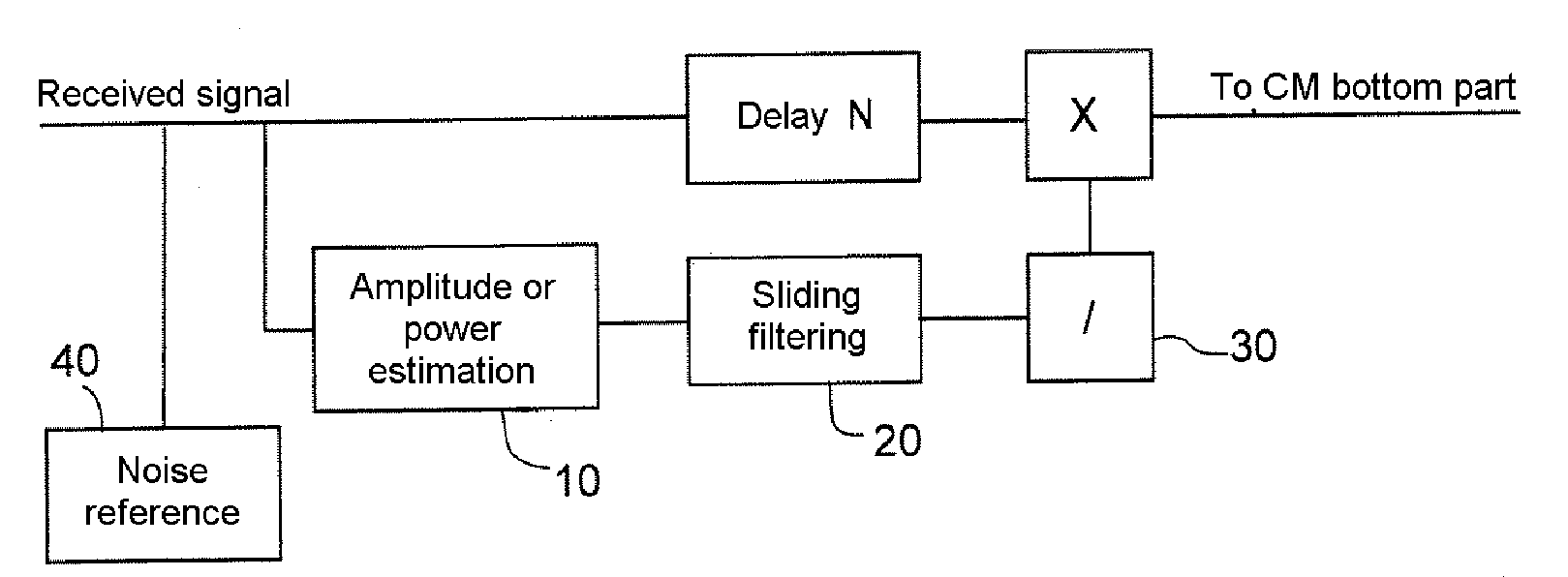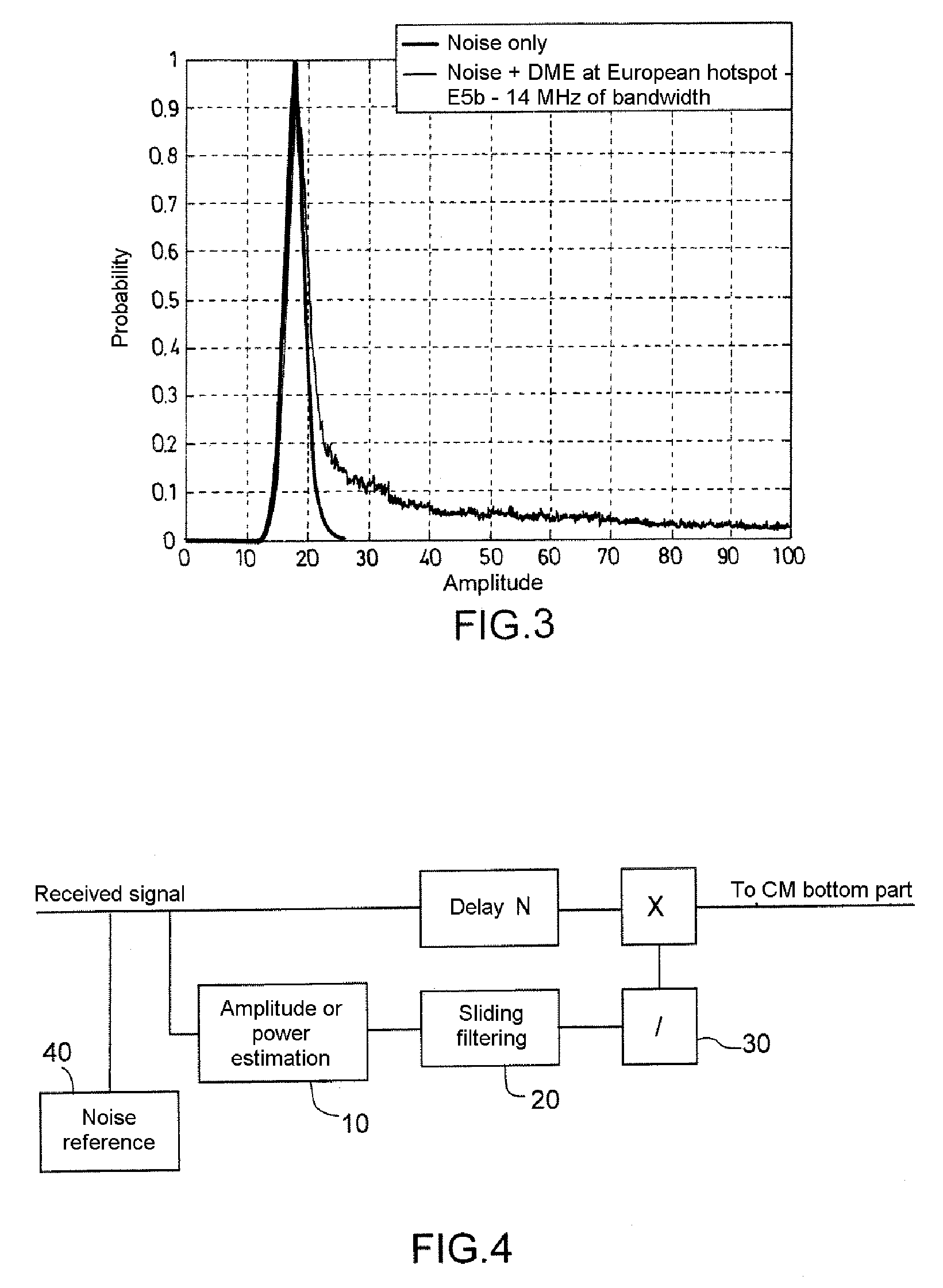Processing of interference on a radiofrequency signal by power inversion
a radiofrequency signal and power inversion technology, applied in the field of radiofrequency receivers, can solve problems such as prejudicial loop delay, substantial degrading of useful signal, and solution not working
- Summary
- Abstract
- Description
- Claims
- Application Information
AI Technical Summary
Benefits of technology
Problems solved by technology
Method used
Image
Examples
first embodiment
[0044]A first embodiment consists in estimating the absolute thermal noise, giving an absolute blanking threshold and ensuring that the thermal noise does not change during the tests. In order to estimate the absolute thermal noise, the estimation of the gain of the HF subsystem is performed by laboratory calibration and the estimation of the noise figure by measuring the noise of the subsystem with the antenna disconnected. This combination of two point measurements provides an exact knowledge of the noise in the HF subsystem at a given moment and makes it possible to perform the blanking as a function of this noise estimation. Charts are needed from which to derive the thermal noise estimation bias variations according to temperature, pressure, dynamic range and aging. This solution can be praticable for stable environments but is less well-suited to receivers subject to major dynamic ranges.
second embodiment
[0045]A second embodiment consists in using an unbiased estimation of the thermal noise by injection of an innovation calculated to optimize the gain of the receiver. The innovation is calculated on the basis of the analysis of the signal power or amplitude probability density function. This function is analyzed in its part where there are few high amplitude or power samples and which is affected little by the interferences as shown by FIG. 3.
[0046]This injection can be performed synchronously. The module that is used is located in the bottom part (40) of FIG. 5. It can be located in the same FPGA as the basic device of the invention. It comprises a submodule 400 for estimating the amplitude or the power of the signal, a filtering submodule 500 which will have the same time constant as the filtering module described hereinabove. Conventionally, the device comprises an AGC submodule 60. At the input of this submodule 600, a control submodule 700, which comprises one or more non-linea...
PUM
 Login to View More
Login to View More Abstract
Description
Claims
Application Information
 Login to View More
Login to View More - R&D
- Intellectual Property
- Life Sciences
- Materials
- Tech Scout
- Unparalleled Data Quality
- Higher Quality Content
- 60% Fewer Hallucinations
Browse by: Latest US Patents, China's latest patents, Technical Efficacy Thesaurus, Application Domain, Technology Topic, Popular Technical Reports.
© 2025 PatSnap. All rights reserved.Legal|Privacy policy|Modern Slavery Act Transparency Statement|Sitemap|About US| Contact US: help@patsnap.com



